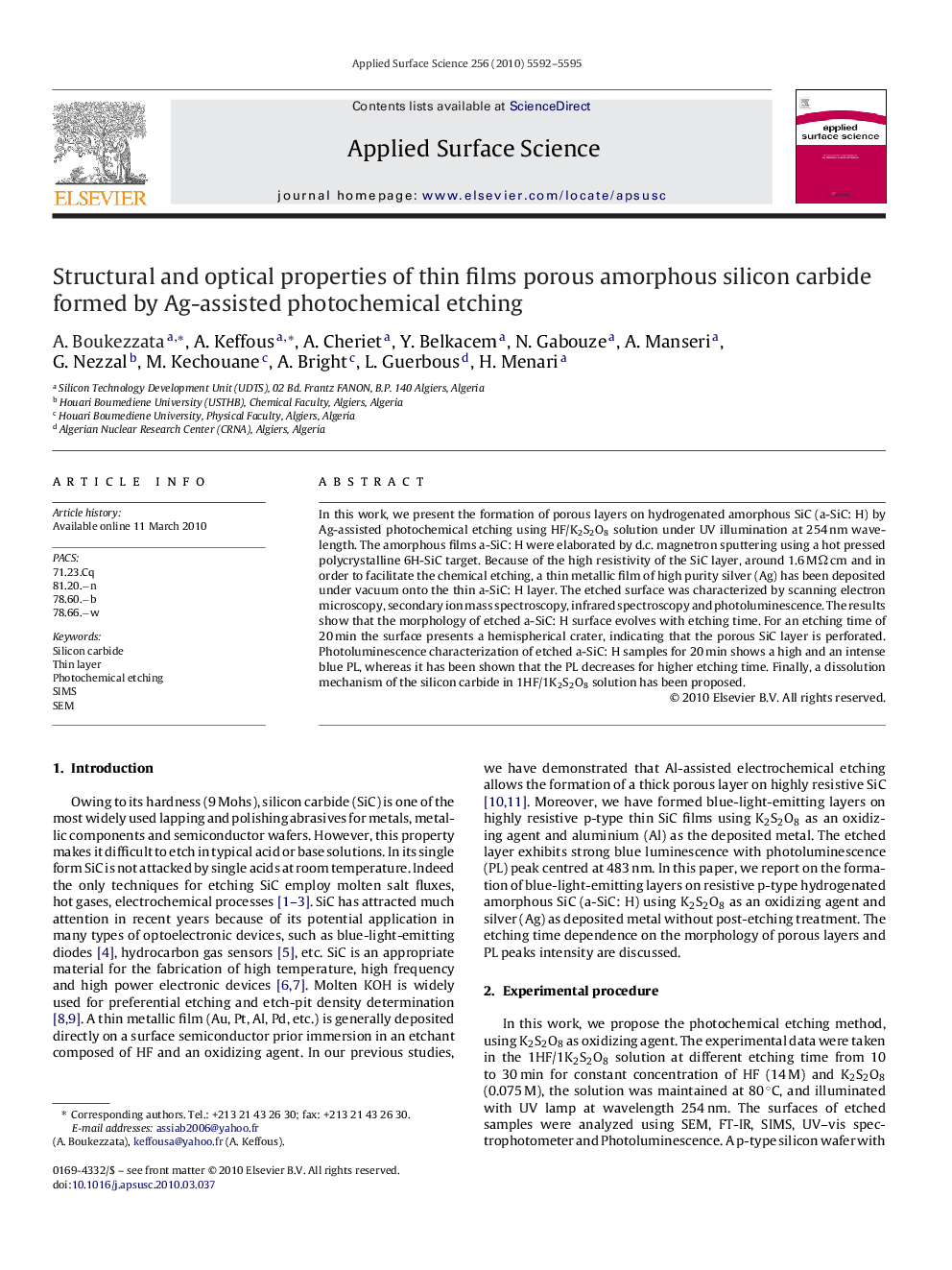| Article ID | Journal | Published Year | Pages | File Type |
|---|---|---|---|---|
| 5360217 | Applied Surface Science | 2010 | 4 Pages |
Abstract
In this work, we present the formation of porous layers on hydrogenated amorphous SiC (a-SiC: H) by Ag-assisted photochemical etching using HF/K2S2O8 solution under UV illumination at 254 nm wavelength. The amorphous films a-SiC: H were elaborated by d.c. magnetron sputtering using a hot pressed polycrystalline 6H-SiC target. Because of the high resistivity of the SiC layer, around 1.6 MΩ cm and in order to facilitate the chemical etching, a thin metallic film of high purity silver (Ag) has been deposited under vacuum onto the thin a-SiC: H layer. The etched surface was characterized by scanning electron microscopy, secondary ion mass spectroscopy, infrared spectroscopy and photoluminescence. The results show that the morphology of etched a-SiC: H surface evolves with etching time. For an etching time of 20 min the surface presents a hemispherical crater, indicating that the porous SiC layer is perforated. Photoluminescence characterization of etched a-SiC: H samples for 20 min shows a high and an intense blue PL, whereas it has been shown that the PL decreases for higher etching time. Finally, a dissolution mechanism of the silicon carbide in 1HF/1K2S2O8 solution has been proposed.
Related Topics
Physical Sciences and Engineering
Chemistry
Physical and Theoretical Chemistry
Authors
A. Boukezzata, A. Keffous, A. Cheriet, Y. Belkacem, N. Gabouze, A. Manseri, G. Nezzal, M. Kechouane, A. Bright, L. Guerbous, H. Menari,
